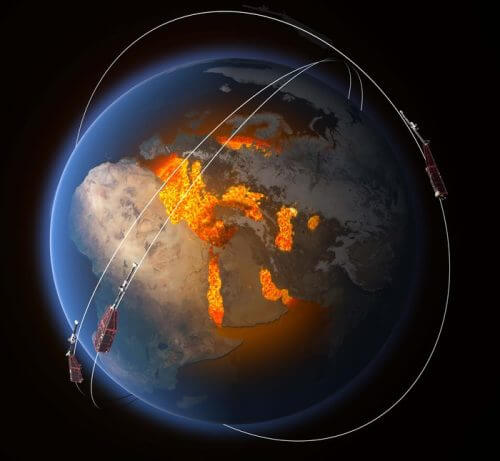Says Prof. Haim Ashad, who for years headed the military satellite program, and is currently promoting the field of tiny satellites

While the Dokifat 2 satellite is about to take off in a few months for a European mission to study the thermosphere, an initiative built on the success of Dokifat 1, which will soon celebrate two successful years in space, and the hoped-for success of Dokifat 2, is already being organized. You will use the knowledge gained in the development of Dokifat 2 as a satellite in a swarm, to develop swarms or swarms of satellites.
Dokifat 2 is a small scientific satellite for the study of near space that is being built as part of a pan-European program that includes: measuring plasma density, a multi-satellite experiment in communication, and an experiment in the removal of space debris. It will be launched by the European Space Agency from the International Space Station in the last quarter of 2016.
The main mission of Dokifat 2 is to investigate the plasma density in the lower thermosphere layer. It will start from an altitude of 415 kilometers and descend, when after about 12 months it will reach a low altitude and decay in the atmosphere. Another task of the Israeli team is to collect information from several satellites in the European band at the ground station in Herzliya and send it to the European Space Agency.
Dokifat 1 was built mainly by the students of the Science Center in Herzliya, however in the development of Dokifat 2, in addition to the students of Herzliya, students from Ofakim, Ofra, Yeruchem and the Ahad School for Excellence in Science of the Bedouin Diaspora also participated.
"One of the benefits we have from the project we are a partner in is that Dokifat 2 is a member of a group of satellites with a common mission. Now we want to go a step further, to build a group of satellites that talk among themselves like the Technion's Samson program which includes a group of three satellites, but this time it is a large group of dozens of satellites that talk not only among themselves but also with other groups" says Prof. cascade.
According to Dr. Ariel, "the satellites that will be developed in the new venture will have the ability to load software and algorithms after they are launched into space, thereby serving as a platform for scientific experiments and the development of futuristic technologies, and will be able to continue to grow as a complex entity with developing intelligence."
Prof. Ashad adds: "The second and no less interesting venture is a launcher for tiny satellites, there is no other like it in the world and the tiny satellites are usually launched as hitchhikers on commercial launches. We are on the verge of a breakthrough in this area as well. I decided to raise and bring funds in these directions and we want the State of Israel to break ground in the field of tiny satellites, as we also broke ground with the first Technion satellite, Texat, which was launched in 1998 and is still active today, and even earlier, fifty years ago, we broke ground with the Comet satellite. We intend to do this with the launchers for tiny satellites as well."
More of the topic in Hayadan:
Exclusive to the Hidan site - first exposure of the Dokifat 2 satellite
Duchifat 1 works perfectly
